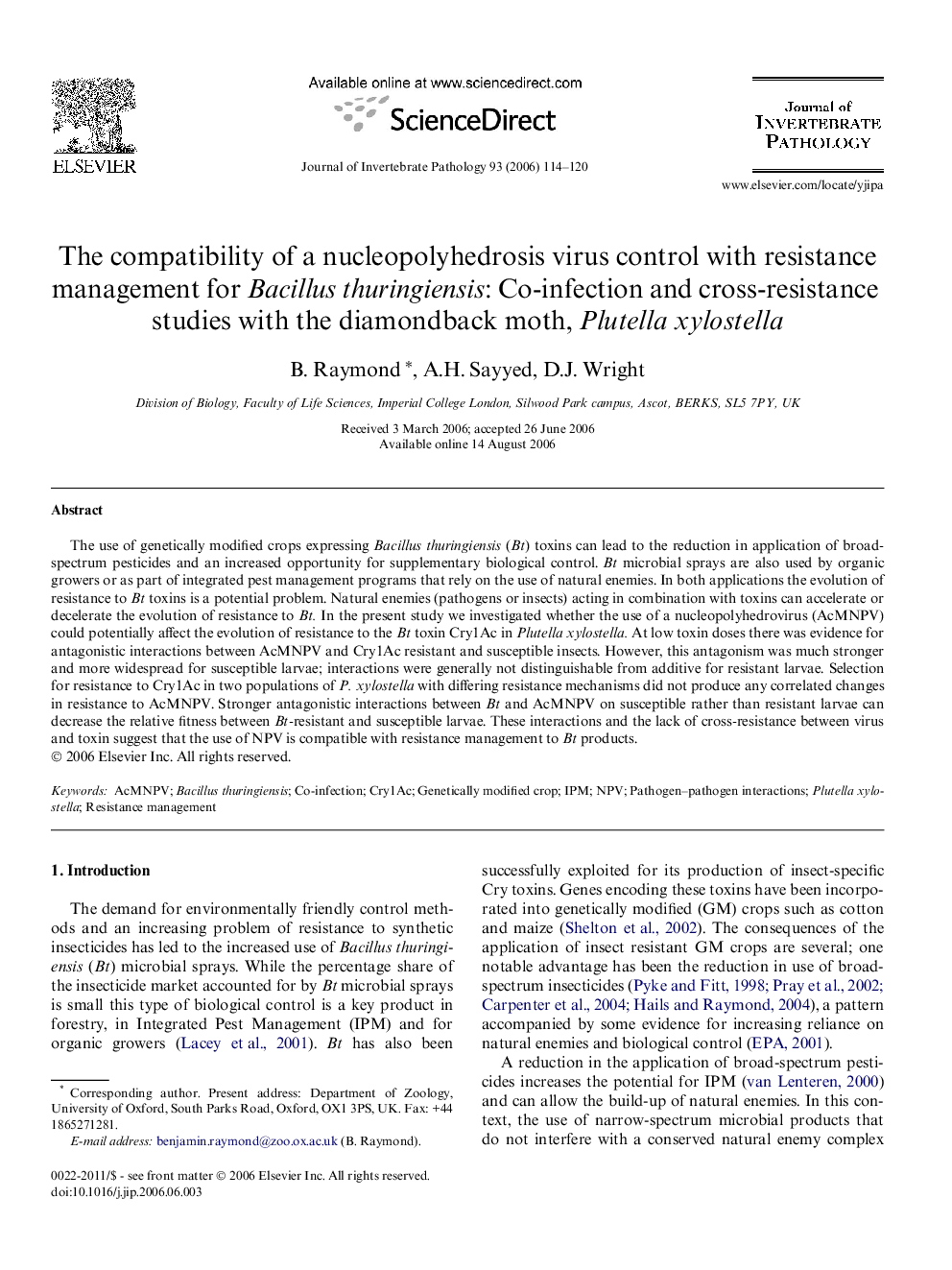| Article ID | Journal | Published Year | Pages | File Type |
|---|---|---|---|---|
| 4558779 | Journal of Invertebrate Pathology | 2006 | 7 Pages |
The use of genetically modified crops expressing Bacillus thuringiensis (Bt) toxins can lead to the reduction in application of broad-spectrum pesticides and an increased opportunity for supplementary biological control. Bt microbial sprays are also used by organic growers or as part of integrated pest management programs that rely on the use of natural enemies. In both applications the evolution of resistance to Bt toxins is a potential problem. Natural enemies (pathogens or insects) acting in combination with toxins can accelerate or decelerate the evolution of resistance to Bt. In the present study we investigated whether the use of a nucleopolyhedrovirus (AcMNPV) could potentially affect the evolution of resistance to the Bt toxin Cry1Ac in Plutella xylostella. At low toxin doses there was evidence for antagonistic interactions between AcMNPV and Cry1Ac resistant and susceptible insects. However, this antagonism was much stronger and more widespread for susceptible larvae; interactions were generally not distinguishable from additive for resistant larvae. Selection for resistance to Cry1Ac in two populations of P. xylostella with differing resistance mechanisms did not produce any correlated changes in resistance to AcMNPV. Stronger antagonistic interactions between Bt and AcMNPV on susceptible rather than resistant larvae can decrease the relative fitness between Bt-resistant and susceptible larvae. These interactions and the lack of cross-resistance between virus and toxin suggest that the use of NPV is compatible with resistance management to Bt products.
